Many of you may have seen the recently published article by the New England Journal of Medicine, Care of the Adult Patient After Sexual Assault (it’s available as a free full text article in PDF form). It was posted on the IAFN Community site (for those of you who are members), along with some comments by the always thoughtful Elise Turner.
Our colleague, Mike Weaver asked me if I would cross-post (with the IAFN community site) some comments he had on this article, which you will find below. But before we get to that I want to say this: articles like this are a good tool to have in your arsenal, because even in the presence of a SANE program, our non-SANE colleagues, including ED physicians, who still interact with these patients, need to have a working understanding of what the medical-forensic issues are. Furthermore, sometimes we need to rely on these same colleagues to provide care for these patients because we don’t have someone available from our own programs to do so. Particularly for programs having trouble covering a schedule 24/7, investing in the education of your backup team (e.g. the ED staff) is a good use of resources and good patient care, along with being good for sustainability. (The argument that if we teach ED docs to do these well, we won’t have jobs is utter crap–it’s like arguing that if you as a manager surround yourself with people who are smarter than you, you will be replaced with one of them. Nonsense–it makes you a better leader, makes your program stronger.)
From Dr. Weaver:
I’m happy to see the house of medicine devote time and scholarship to the speciality of forensics in sexual assault care. As an important reference article, I would make note of two comments regarding time limits expressed in the article. First, regarding the 96 hour limit for DFSA , the Society of Forensic Toxicologist (http://www.soft-tox.org/files/DFSA_Fact_Sheet.pdf), recommended that time line be extended to 120 hours last year and the FBI has adopted that recommendation.
The second has to do with “the range from 72 – 120 hours” time limit to collect forensic evidence. Without better clarity, it suggests that only someone showing up within 120 hours and wants to have evidence collected, should be referred to an ED or treatment center! So often this is simply reduced to a question asked by a screening clerk, e.g., how long ago did your assault occur. Patients are then turned away from any acute assessment because of some relatively arbitrary time interval. At Saint Luke’s, we do not ever turn anyone away who presents with the complaint of sexual assault. We “Start By Believing” and everyone has their absolutely essential sexual assault history obtained, and only then, is it determined what type of “evidence” should be sought for collection. Clearly sperm in the cervix, DNA on clothing and important documentation of injury/bruising occurs past 120 hours. Our program being the 1st private sexual assault center in the country has always taught, that without 1st seeking a thorough history, you don’t know what evidence you might find!
Finally, to view this decision from the patients perspective. How do they know (informed consent) if they “wish to have evidence collected?” Unless you allow these patients to be seen by a forensic examiner and an advocate, where their options can be appropriately explained, you have not provided “patient centered care.” And if you send that patient on down the road.. they may never show up anywhere else again.
Michael L. Weaver, MD FACEP
Founding Board Member EVAW Int.
Past Chair, ACEP Forensic Section
Medical Director, Forensic Care Program
Saint Luke’s Health System
Kansas City, MO 64111
BTW, anyone who wants to comment on an issue, provide a guest post, or suggest topics for further discussion on this site need only contact me and we can talk further.
